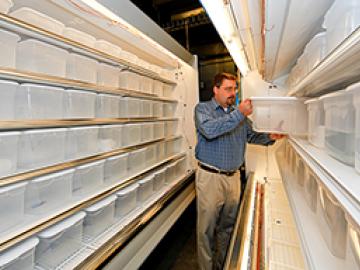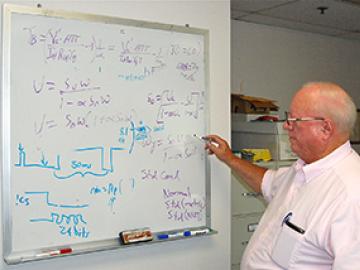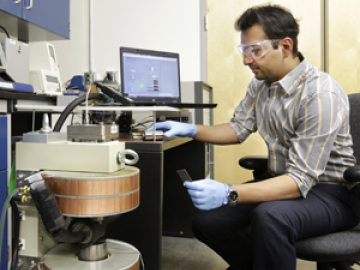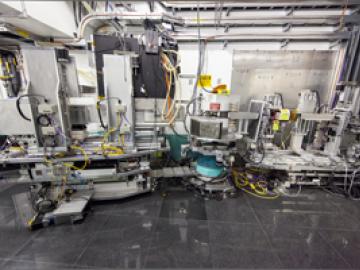Filter News
Area of Research
- (-) Clean Energy (14)
- Advanced Manufacturing (2)
- Biology and Soft Matter (2)
- Building Technologies (2)
- Chemical and Engineering Materials (2)
- Chemistry and Physics at Interfaces (4)
- Climate and Environmental Systems (4)
- Computational Chemistry (4)
- Computational Engineering (1)
- Computer Science (1)
- Earth Sciences (1)
- Energy Frontier Research Centers (4)
- Fuel Cycle Science and Technology (1)
- Functional Materials for Energy (5)
- Materials (12)
- Materials for Computing (6)
- Materials Synthesis from Atoms to Systems (5)
- Materials Under Extremes (4)
- Neutron Data Analysis and Visualization (2)
- Neutron Science (3)
- Nuclear Science and Technology (1)
- Quantum Condensed Matter (2)
- Renewable Energy (1)
- Sensors and Controls (1)
- Supercomputing (11)
- Transportation Systems (3)
Media Contacts

When Department of Energy and Oak Ridge National Laboratory researcher Yan Xu talks about “islanding,” or isolating, from the grid, she’s discussing a fundamental benefit of microgrids—small systems powered by renewables and energy storage devices. The benefit is that microgrids can disconnect from larger utility grids and continue to provide power locally.

Complex oxides have long tantalized the materials science community for their promise in next-generation energy and information technologies. Complex oxide crystals combine oxygen atoms with assorted metals to produce unusual and very desirable properties.

Blowing bubbles may be fun for kids, but for engineers, bubbles can disrupt fluid flow and damage metal.

Keeping food fresh is no easy feat. Trials of transporting ice over long distances and the hazards of systems that rely on toxic gases riddle the pages of refrigeration history. And although cooling science has come a long way in the past two centuries, modern refrigeration has an environmental cost...

depth, population-based approach to identifying such mechanisms for adaptation, and describes a method that could be harnessed for developing more accurate predictive climate change models. For the U.S. Department of...

In the early 1980s, the Department of Energy’s Oak Ridge National Laboratory was just beginning to explore transfer of technology from the lab to industry. Now it's the norm, and one historical example illustrates the long-term benefits.

Not much has changed in refrigeration technology in the past 100 years, until now. Researchers with Oak Ridge National Laboratory’s Building Technologies Program have partnered with General Electric (GE) Appliances through a cooperative research and development agreement (CRADA) to revolutionize home refrigerators using magnetocaloric cooling.

Thomas Wilbanks and Benjamin Preston, both of the Climate Change Science Institute (CCSI) at Oak Ridge National Laboratory (ORNL), are among the 309 coordinating lead authors of the Intergovernmental Panel on Climate Change’s (IPCC’s) Working Group II (WG II) report.

Carbon dioxide in the atmosphere may get the lion’s share of attention in climate change discussions, but the biggest repository of carbon is actually underfoot: soils store an estimated 2.5 trillion tons of carbon in the form of organic matter.

Photovoltaic spray paint could coat the windows and walls of the future if scientists are successful in developing low-cost, flexible solar cells based on organic polymers. Scientists at the Department of Energy’s Oak Ridge National Laboratory recently discovered an unanticipated factor in the performance of polymer-based solar devices that gives new insight on how these materials form and function.




